


A spiral pattern is still traceable in galaxies of this luminosity class, but with some difficulty in certain cases such as NGC 4540. The pattern is evident, but coherent arms hardly exist. At most, one traces only fragments, such as those on the north side of NGC 2976 and the generally chaotic pieces in NGC 1313 and NGC 4395.
Notice also the great difference in average surface brightness among galaxies of this class. The SdIII-IV system of NGC 4395 / 4401 is of much lower surface brightness than NGC 4540; yet the highest-surface-brightness galaxy among those shown here is NGC 2976, which has the faintest absolute magnitude at MBT0, i = - 17m.51. Clearly, surface brightness is not an indicator of absolute luminosity for these Population I systems (although there is a pronounced absolute magnitude -surface brightness relation for E and SO galaxies over the range -23m < M <-12m).
The range in absolute magnitude of the galaxies shown here is ~ 2.2 mag. The range is ~ 2.8 mag among all the galaxies in the RSA of this type.
Note that the six illustrated galaxies contain some type Sd systems (NCC 4395 / 4401, and NGC 2976) and two intermediate Scd systems (NGC 4592 and NGC 4540). The difference between the Sc and Sd subtypes rests in the clarity of the arm pattern.
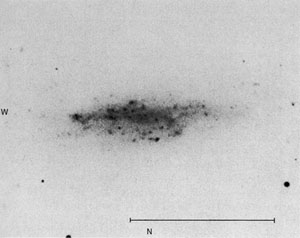
NGC 4592 W100-2271-H ScdIII -19m.82 2698 km/s | 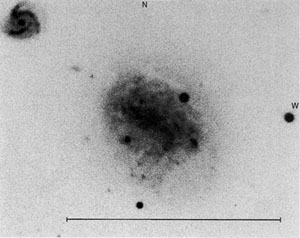
NGC 4540 W100-2250-H Scd(s)III-IV -19m.19V 1285 km/s |
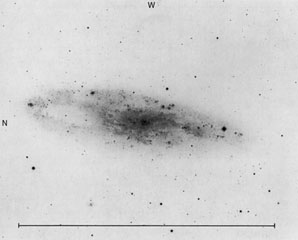
NGC 247 C100-512-S Sc(s)III-IV -18m.62S 156 km/s | 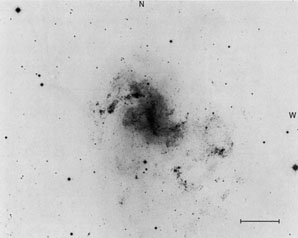
NGC 1313 C100-496-S SBc(s)III-IV -19m.66 452 km/s |
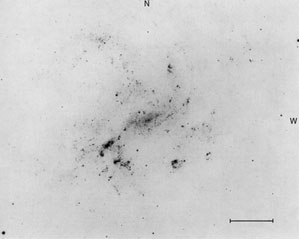
NGC 4395 / 4401 P200-7146-S SdIII-IV -18m.57 317 km/s | 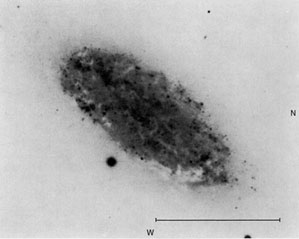
NGC 2976 P200-59-S SdIII-IV -17m.51N 13 km/s |